HW Studio’s Casa Emma transforms a humble terrace house into a realm of light and space
The living spaces in HW Studio’s Casa Emma, a new one-bedroom house in Morelia, Mexico, appear to have been carved from a solid structure
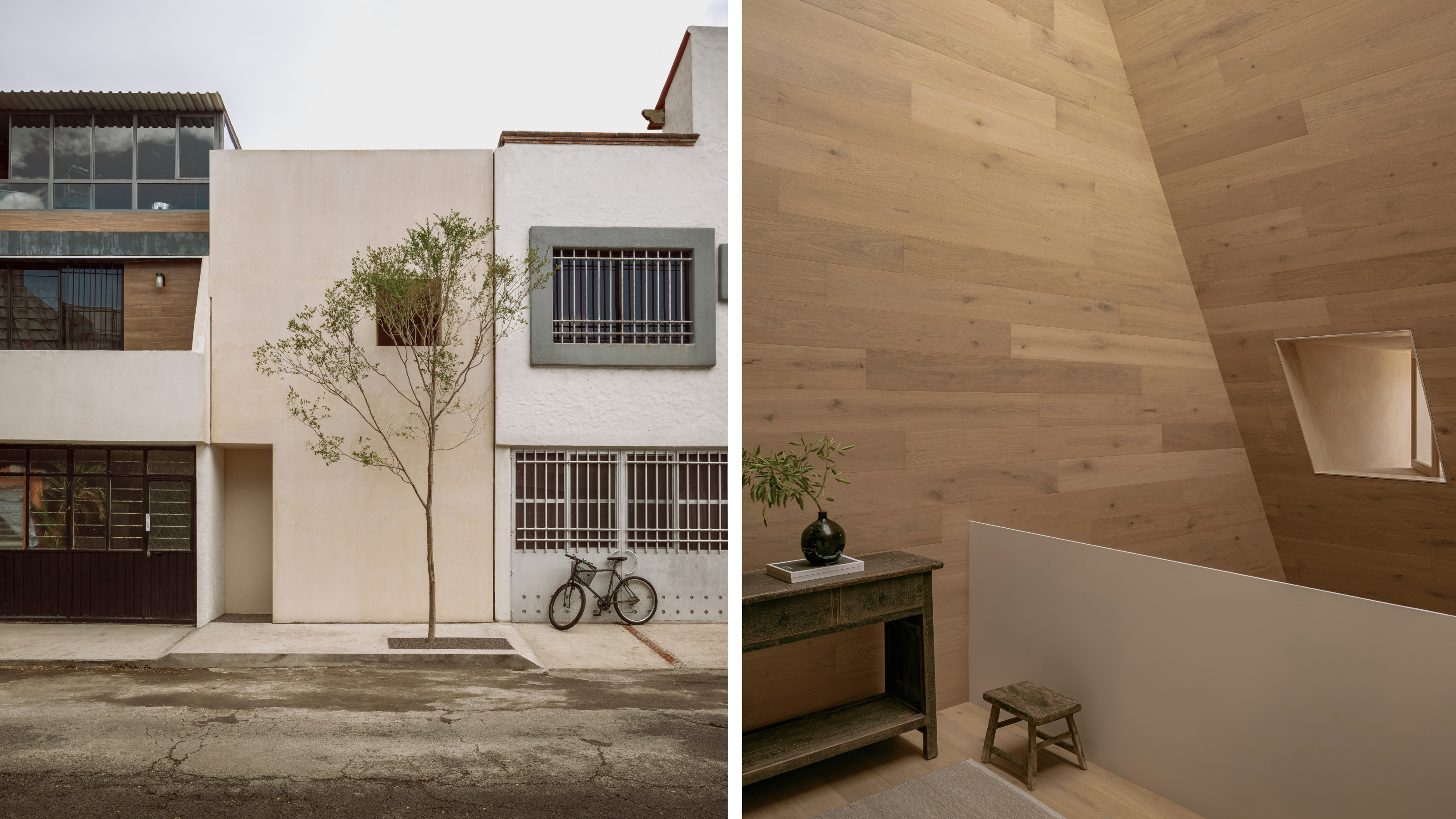
A compact puzzle box of a house, the 54 sq m of Casa Emma is a tightly plotted series of spaces that belie its modest external presentation. HW Studio, led by Rogelio Vallejo Bores working with Oscar Didier Ascencio Castro and Nik Zaret Cervantes Ordaz, approached this small terrace house in Morelia, in the western Mexican state of Michoacán, with several influences in mind. First up was Eduardo Souto de Moura’s Casa das Histórias Paula Rego, just outside Lisbon.
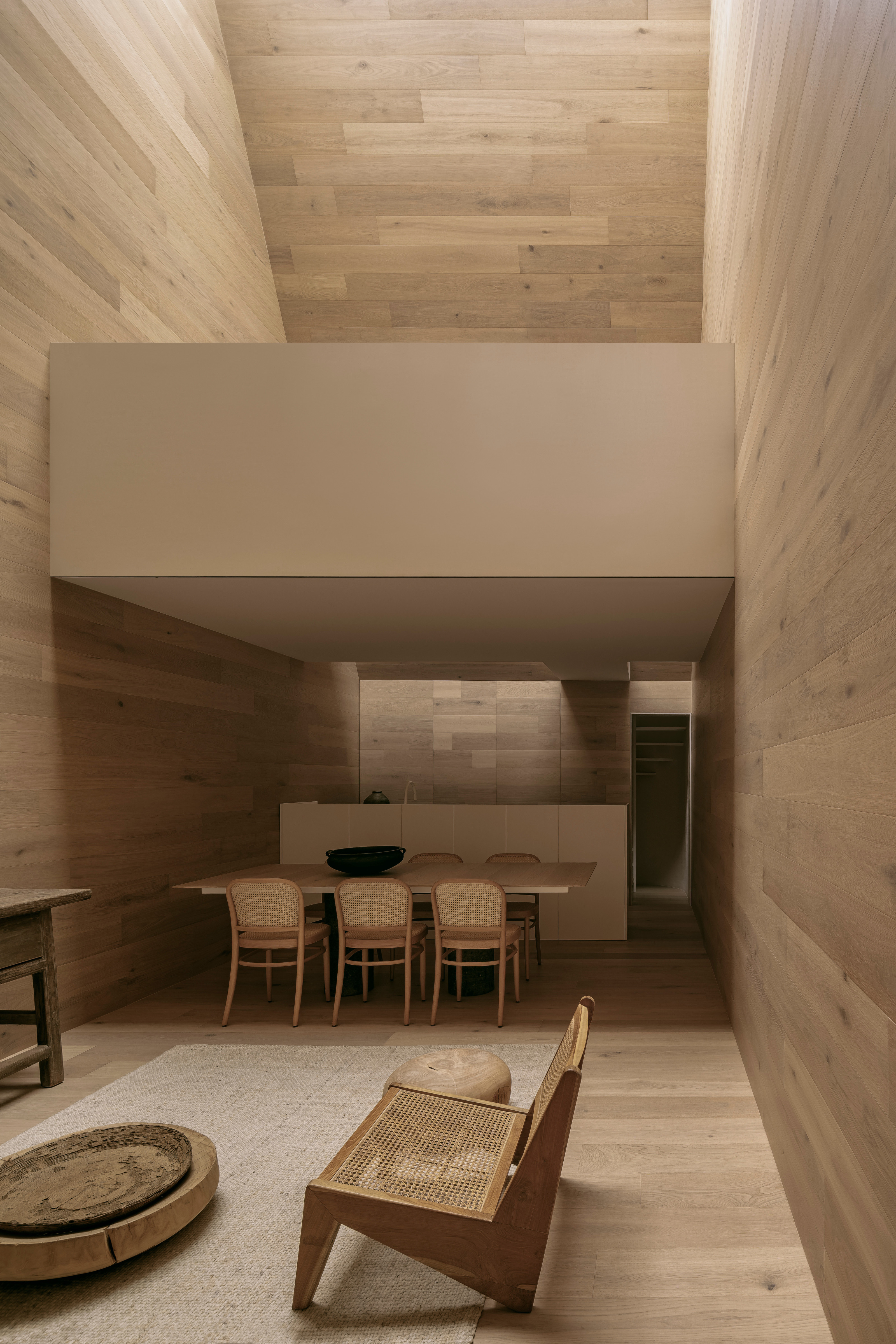
Casa Emma, main living space with kitchen beyond and bedroom above
Step inside Casa Emma
‘Beneath one of the pyramids, [we] were enveloped by a sense of awe and indescribable serenity,’ they say, describing how the Portuguese architect manipulated the way light entered the galleries. ‘Light filtered gently through a high skylight, cascading like golden rays on the museum’s surfaces. It felt as if every corner of the building was bathed in soft, velvety, warm light that touched everything and brought it to life.’
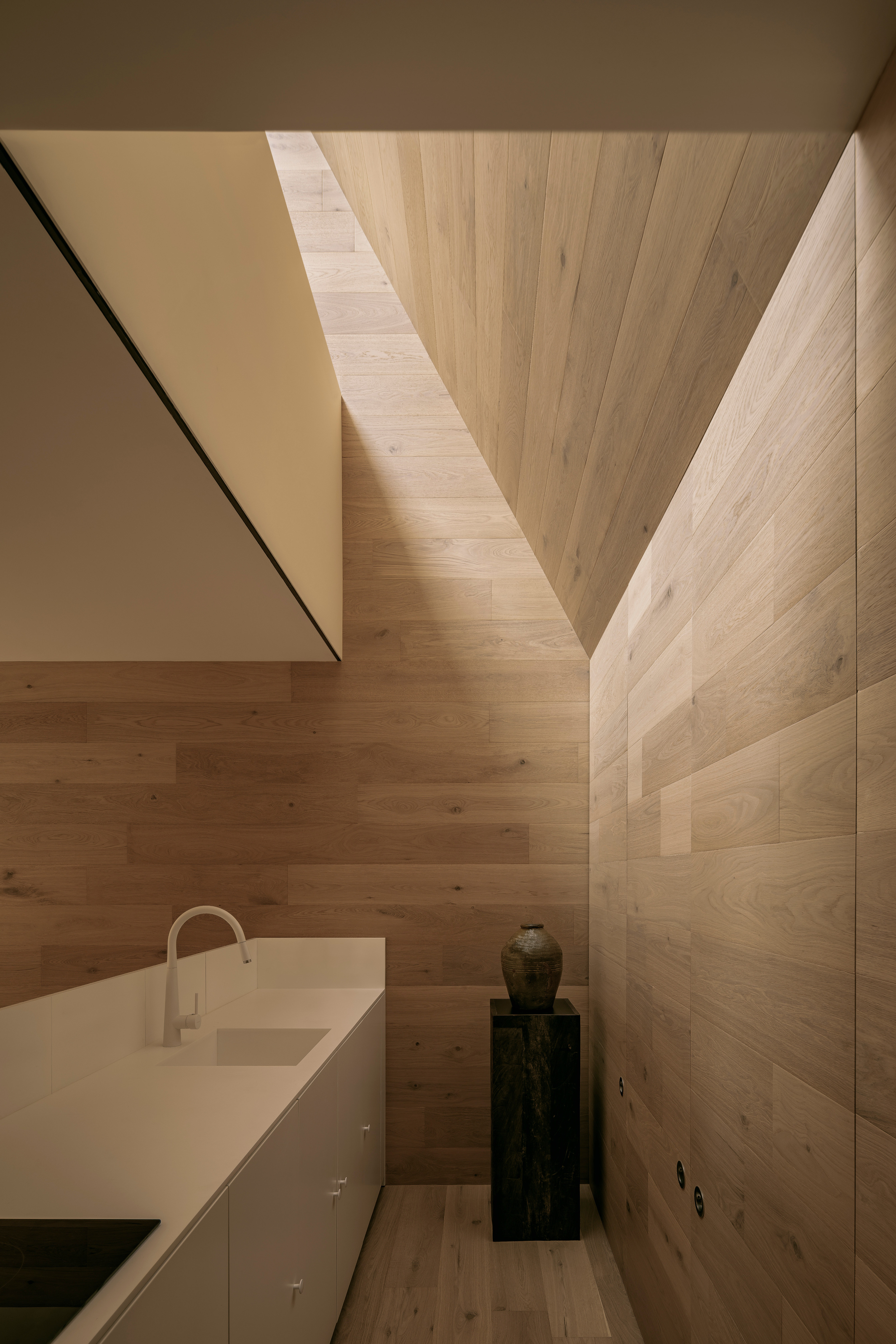
Casa Emma, the bedroom is suspended above the kitchen
A gallery devoted to one of the great modern painters is a very different proposition to a small family house, but this ethos of calm was the overriding quality HW Studio sought to bring to the project. Casa Emma is a concrete and masonry shell plastered with the vernacular natural coating known as chukum, made using resin from the chukum tree mixed with water and stone powder, to create a monolithic, mysterious exterior.
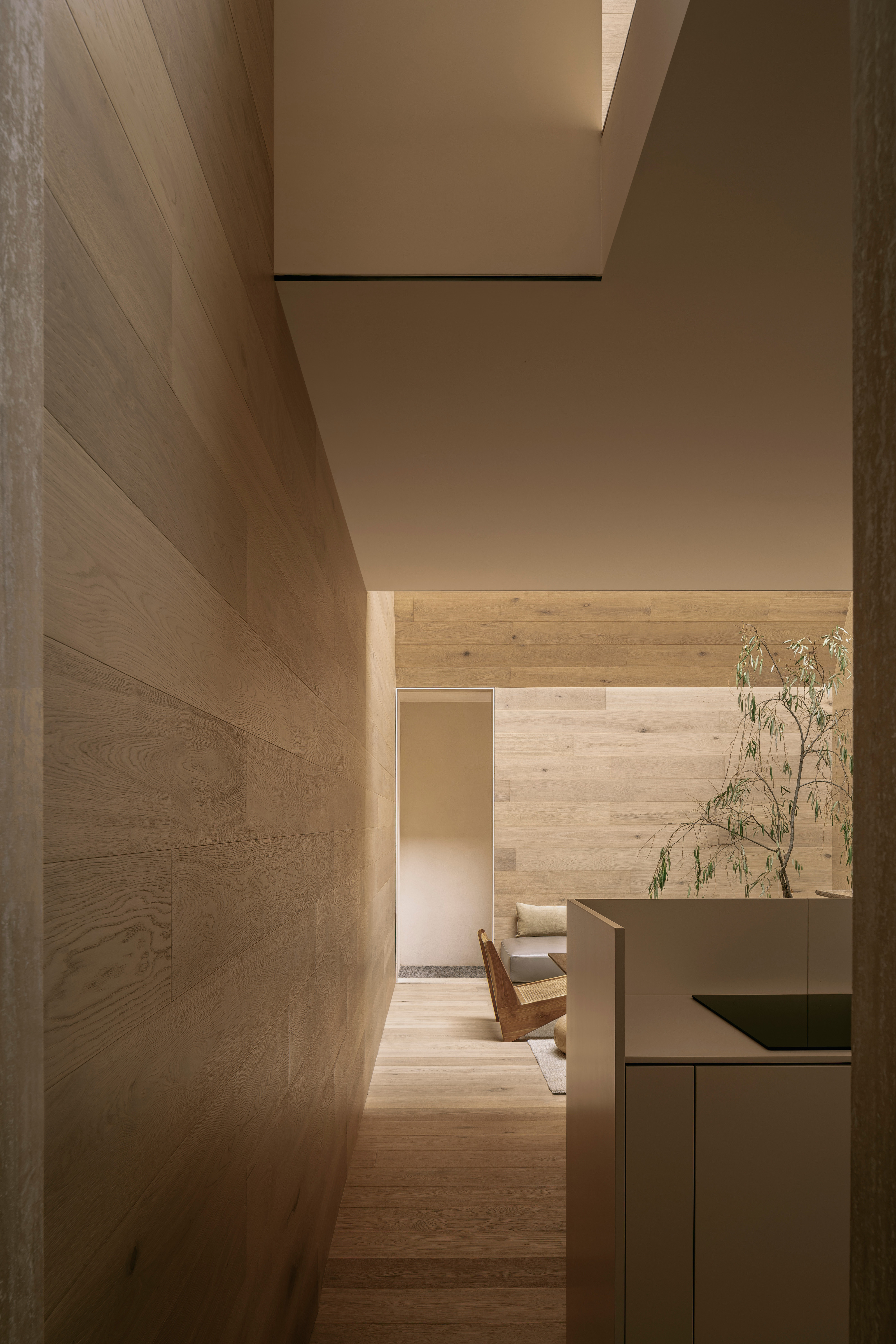
Casa Emma, looking back through the living space to the front door
Inside, the primarily top lit space is clad throughout in engineered wooden, with chukum finishes in the entrance way and bathroom. It gives the impression of being inside a piece of furniture, a sense enhanced by the relatively tight dimensions, sharply cut angles and feeling of descending into drawers within drawers. The other guiding light was the simple, rough carpentry of the traditional granary structure, the Troje, developed by the pre-Columbian Purépecha people.
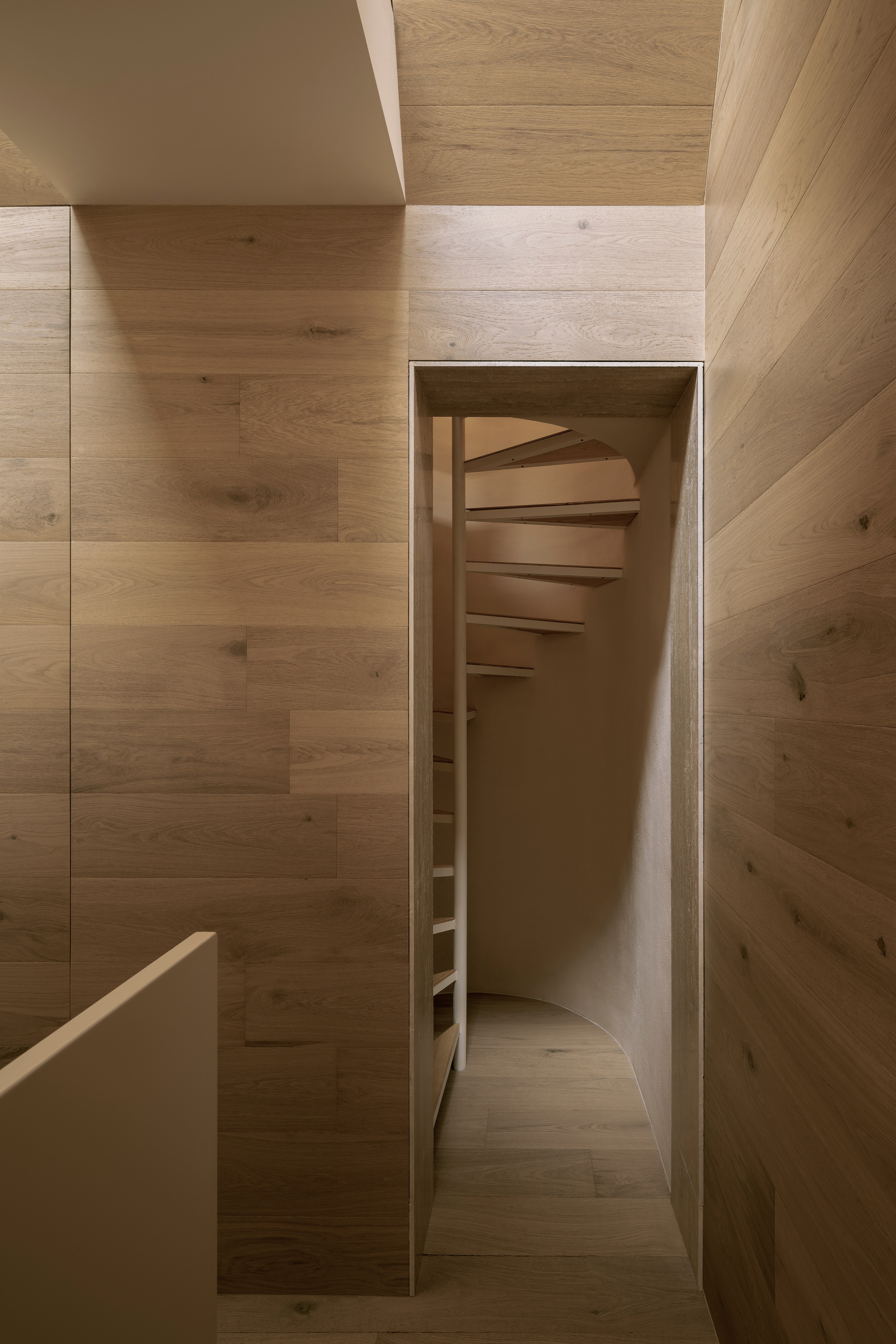
The compact spiral staircase leads up to the bedroom
At just 4m x 10m wide, the tight plot set the architects many constraints. The design strategy treated the house as if it were a solid mass, with the façade giving way to an interior that had been carved out from within. From the street, there is no sense of the steeply sloping roof structure, or the skylights, with just a front door and a single square window with deep reveal that appears to puncture the façade.
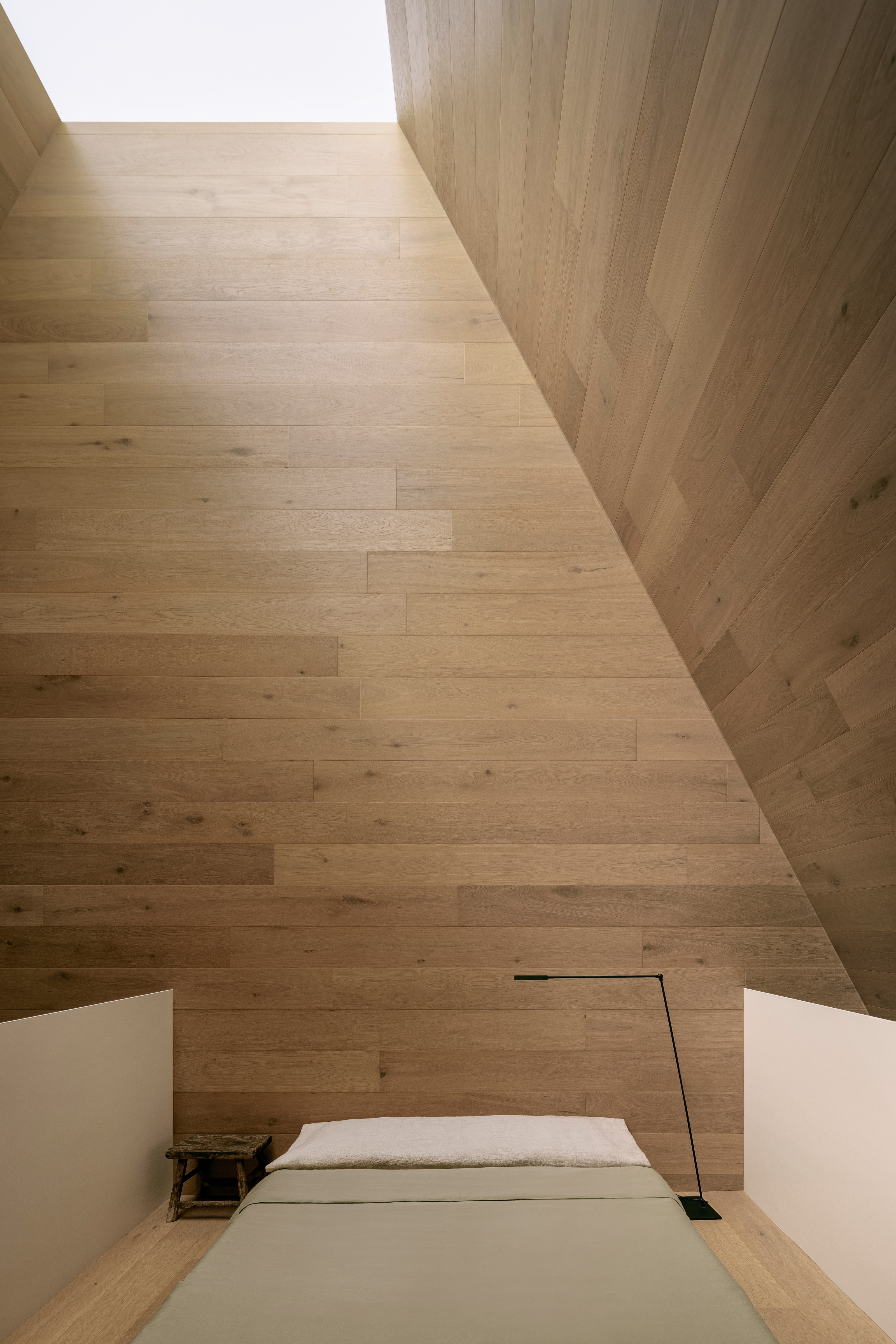
The bedroom is placed on a mezzanine above the living space
The front door leads down an access corridor that kinks back and forth as it leads the main living space, with a kitchen and dining area set at the rear of the site, with utility areas and spiral staircase beyond. This leads up to the mezzanine level, where a solitary bedroom sits beneath the skylight. Here there’s a shift in materiality, with slender white balustrades replacing the solidity of the wood.
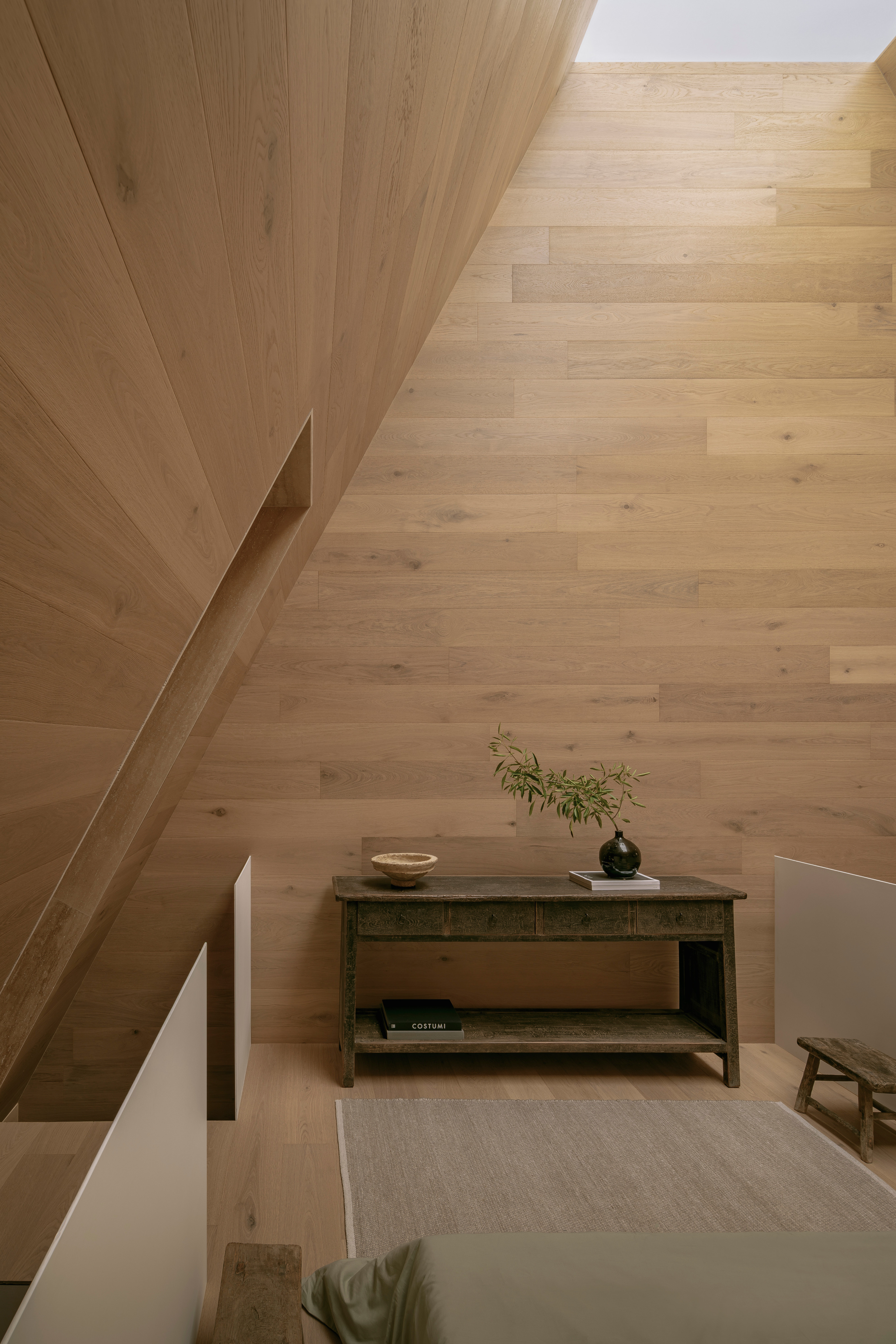
The bedroom space is sparsely furnished and lit from above
The architects describe the bedroom as a ‘white volume that floats within the house’, with material that ‘aims to blur its presence or make it appear lighter, as if it were a piece of cotton floating in space’. On this level, the rear utility wall conceals a small bathroom whilst the spiral stair continues onto a roof terrace located at the rear of the property.
Receive our daily digest of inspiration, escapism and design stories from around the world direct to your inbox.
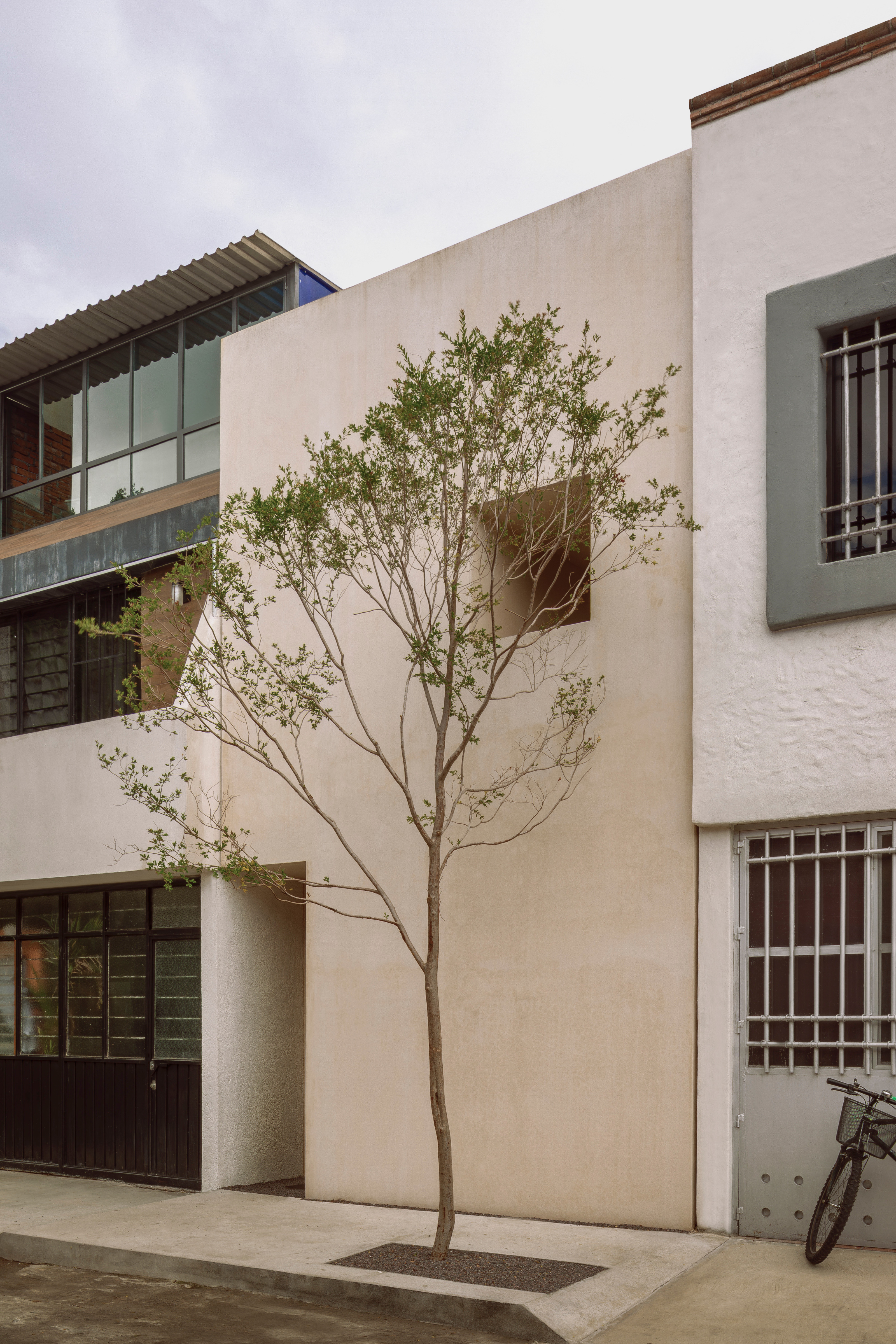
The mysterious, monolithic facade is rendered in chukum
The relatively low cost of the project is a far cry from the monumental modern mansions being built elsewhere in Mexico. The studio gave itself a name that embraced both aspects of its approach – ‘The letter H is considered the silent letter in Spanish, thus graphically representing silence; the letter W comes from the Japanese tea ceremony, Wabi-cha.’
Every HW Studio project encompasses what the architects describe as ‘the three universes’, ‘the universe of the future inhabitant, the universe of the place, and our own inner universe as designers’. Shaping an almost spiritual interior space from a humble terrace house epitomises their approach.
Jonathan Bell has written for Wallpaper* magazine since 1999, covering everything from architecture and transport design to books, tech and graphic design. He is now the magazine’s Transport and Technology Editor. Jonathan has written and edited 15 books, including Concept Car Design, 21st Century House, and The New Modern House. He is also the host of Wallpaper’s first podcast.
-
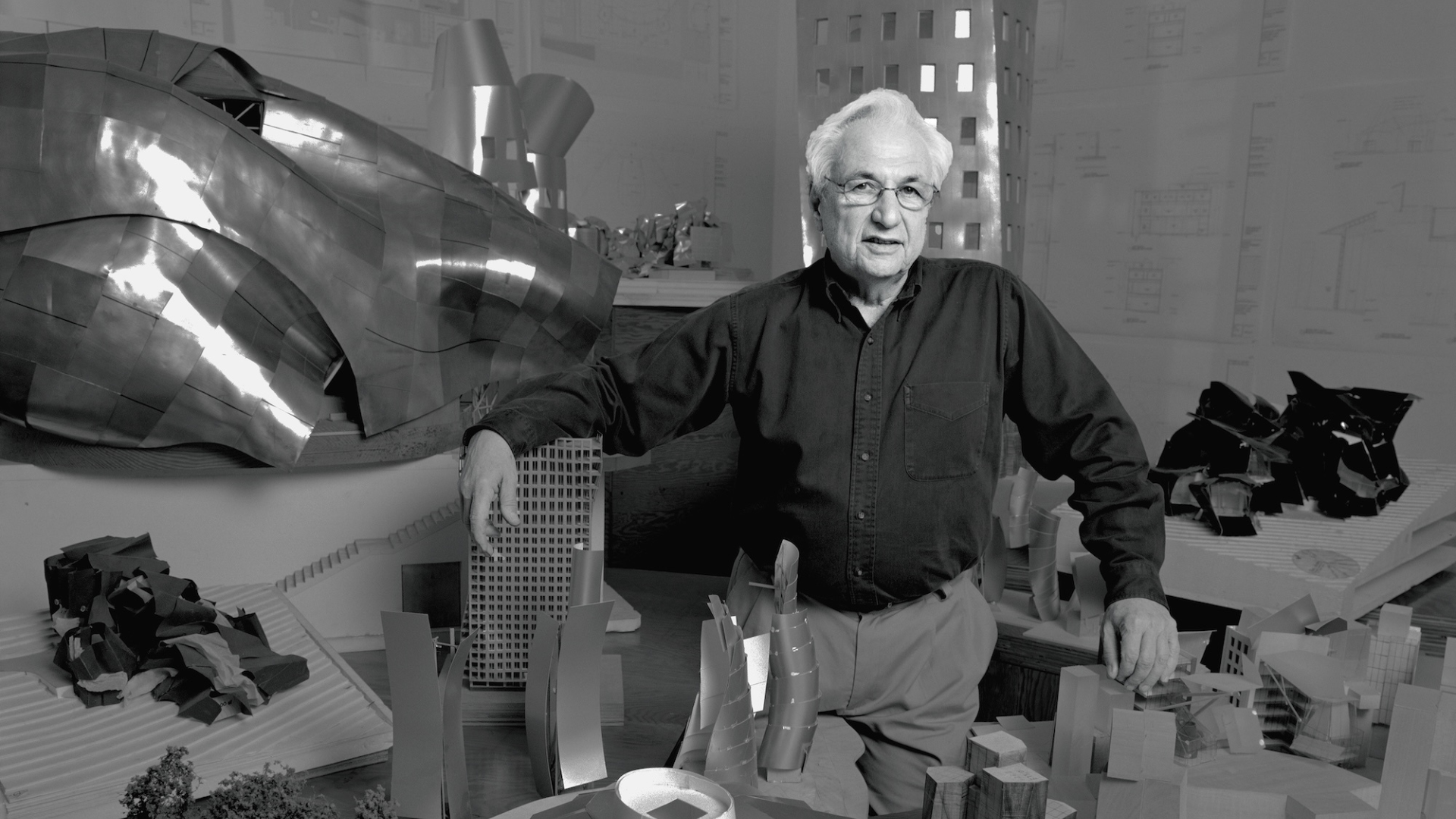 Remembering Frank Gehry, a titan of architecture and a brilliant human being
Remembering Frank Gehry, a titan of architecture and a brilliant human beingLong-time Wallpaper* contributor Michael Webb reflects on the legacy of the Los Angeles architect, who died today at age 96
-
 Lexus finally confirms the name of its all-electric LFA Concept supercar
Lexus finally confirms the name of its all-electric LFA Concept supercarStill designated a design study, the Lexus LFA Concept should be the successor to the most unlikely of all 20th-century supercars
-
 King of cashmere Brunello Cucinelli on his new biographical docu-drama: ‘This is my testimony’
King of cashmere Brunello Cucinelli on his new biographical docu-drama: ‘This is my testimony’Directed by Cinema Paradiso’s Giuseppe Tornatore, ‘Brunello: the Gracious Visionary’ premiered in cinematic fashion at Rome’s Cinecittà studios last night, charting the meteoric rise of the deep-thinking Italian designer
-
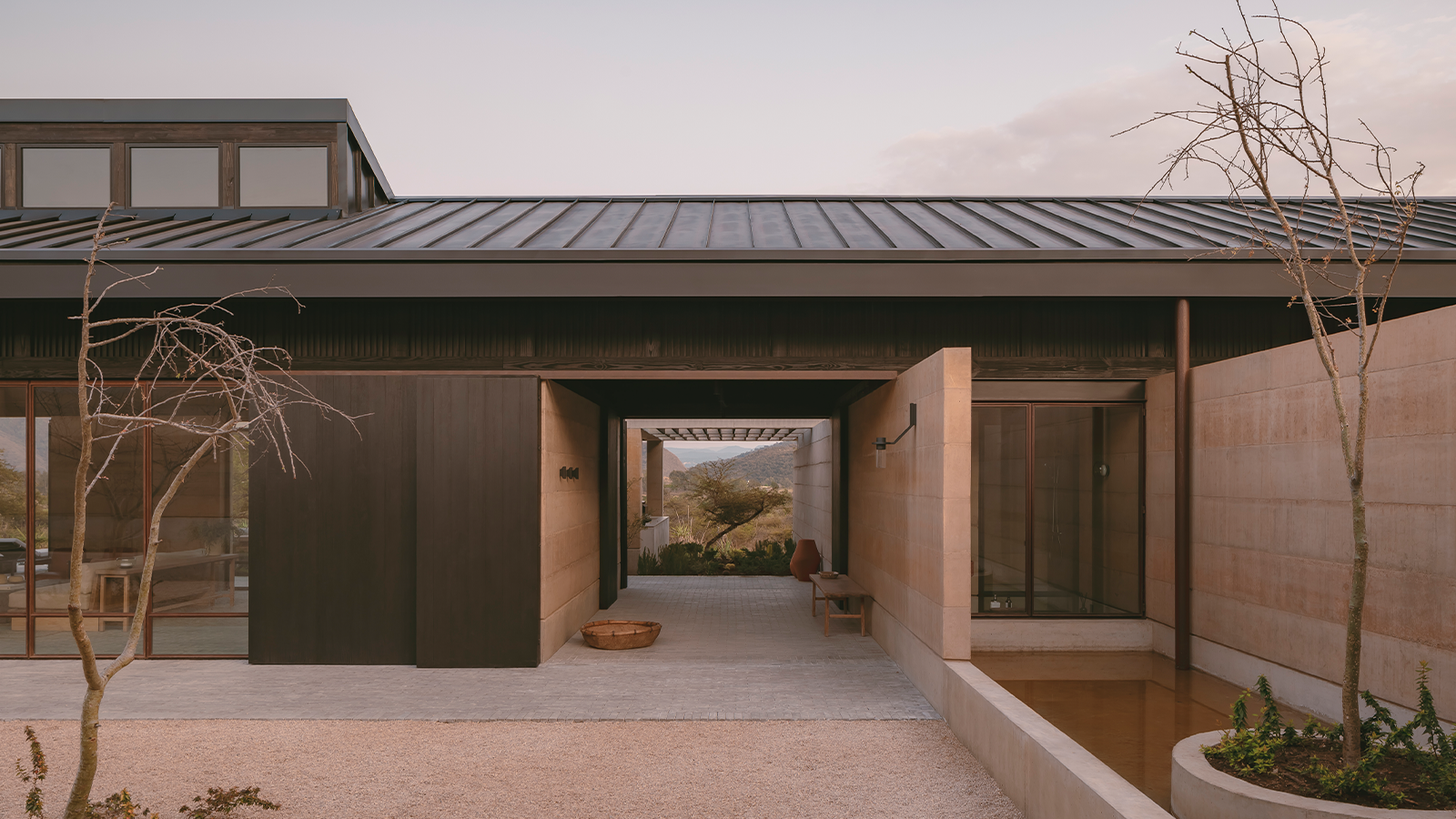 Serenity radiates through this Mexican home, set between two ravines
Serenity radiates through this Mexican home, set between two ravinesOn the cusp of a lakeside town, Mexican home Casa el Espino is a single-storey residence by Soler Orozco Arquitectos (SOA)
-
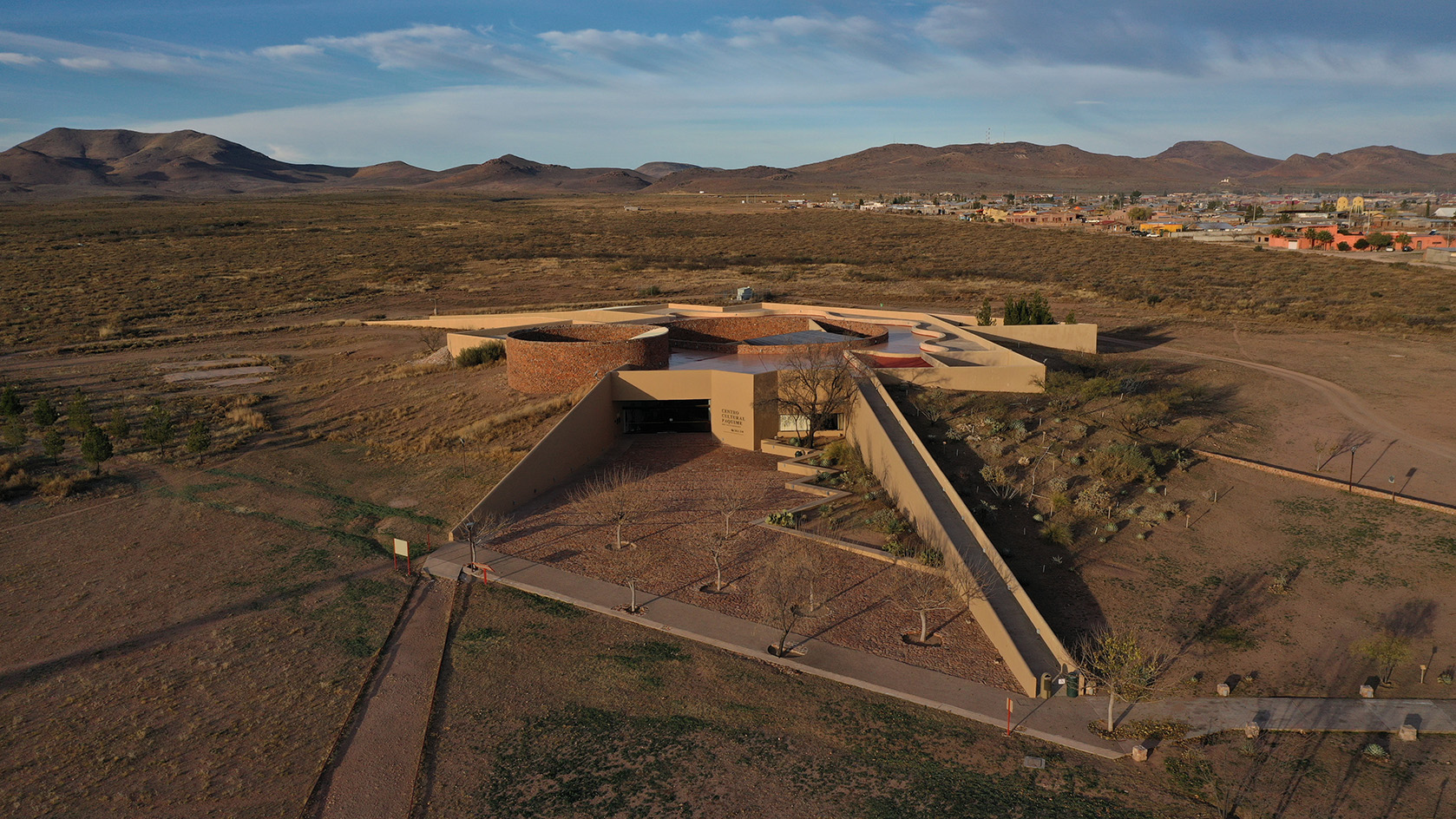 Mexican landscape architect Mario Schjetnan's Grupo de Diseño wins 2025 Oberlander Prize
Mexican landscape architect Mario Schjetnan's Grupo de Diseño wins 2025 Oberlander PrizeThe 2025 Oberlander Prize goes to Mexican landscape architect Mario Schjetnan and his studio, Grupo de Diseño, highlighting the creative's motto: 'We have a human right to open space'
-
 The Architecture Edit: Wallpaper’s houses of the month
The Architecture Edit: Wallpaper’s houses of the monthThis September, Wallpaper highlighted a striking mix of architecture – from iconic modernist homes newly up for sale to the dramatic transformation of a crumbling Scottish cottage. These are the projects that caught our eye
-
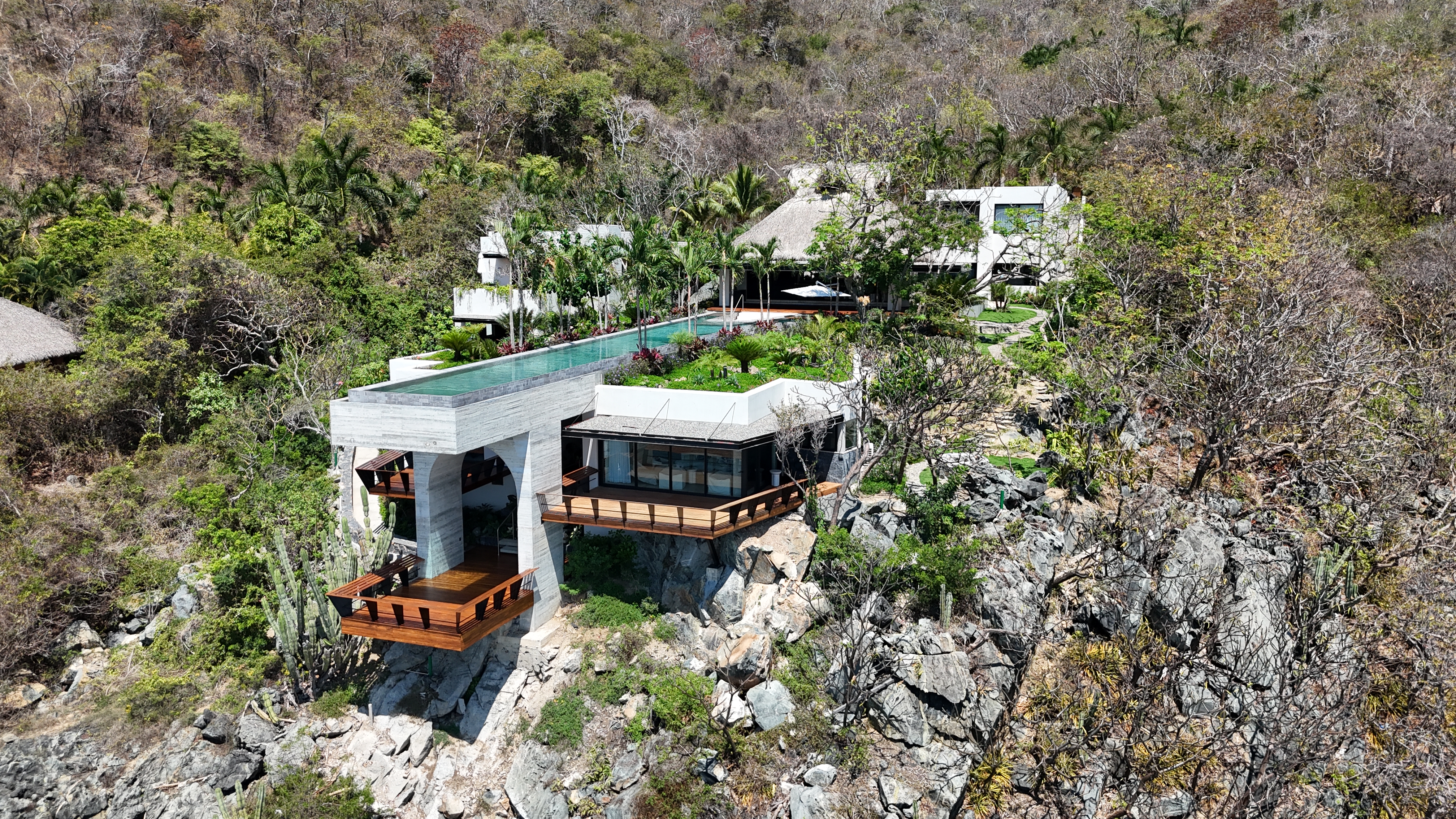 A Mexican clifftop retreat offers both drama, and a sense of place
A Mexican clifftop retreat offers both drama, and a sense of placeCasa Piscina del cielo, a clifftop retreat by Zozaya Arquitectos, creates the perfect blend of drama and cosiness on Mexico's Pacific Coast
-
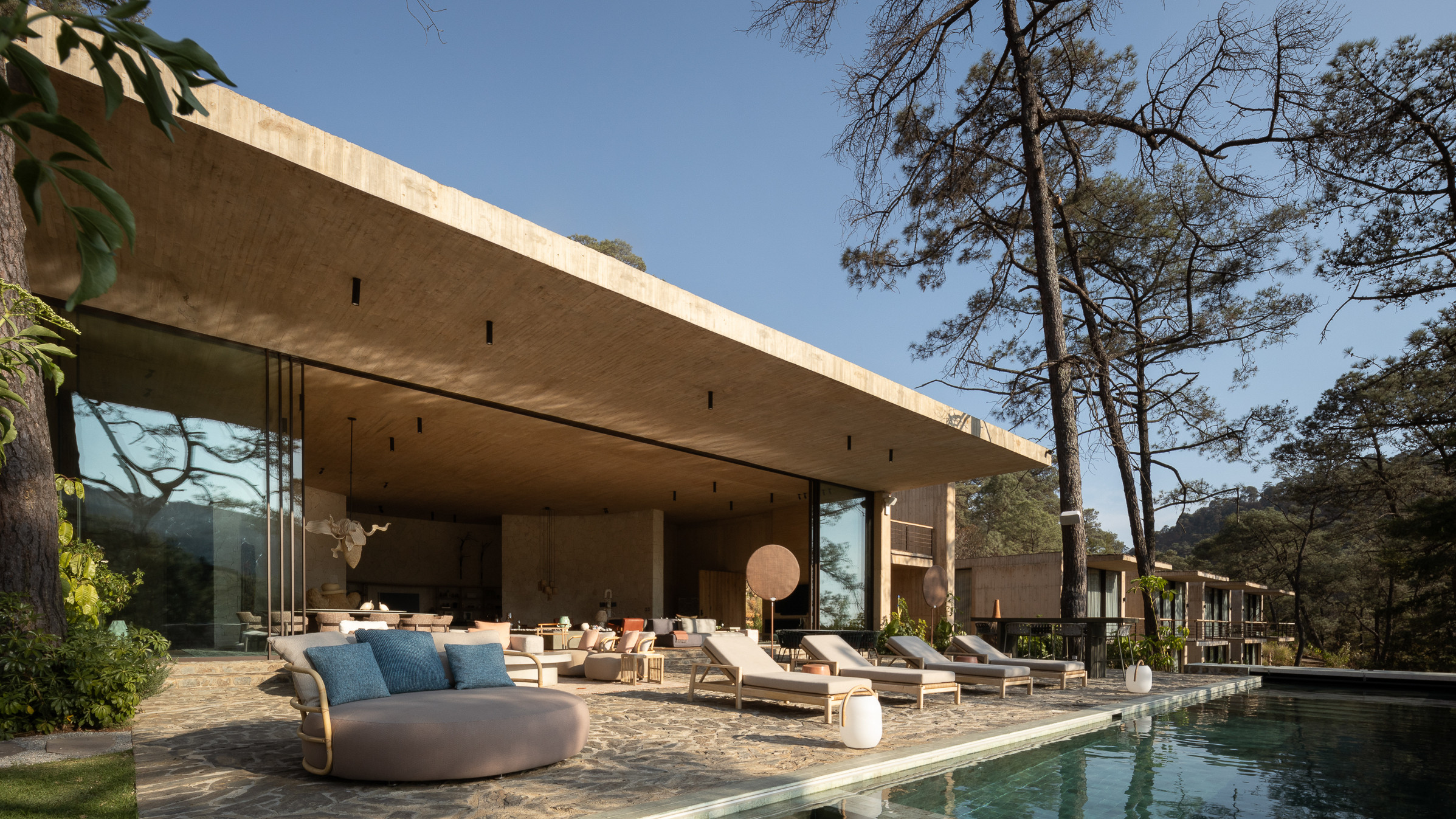 Broken up into six pavilions, this brutalist Mexican house is embedded in the landscape
Broken up into six pavilions, this brutalist Mexican house is embedded in the landscapeSordo Madaleno’s brutalist Mexican house, Rancho del Bosque, is divided up into a series of pavilions to preserve the character of its hillside site, combining concrete, curves and far-reaching views
-
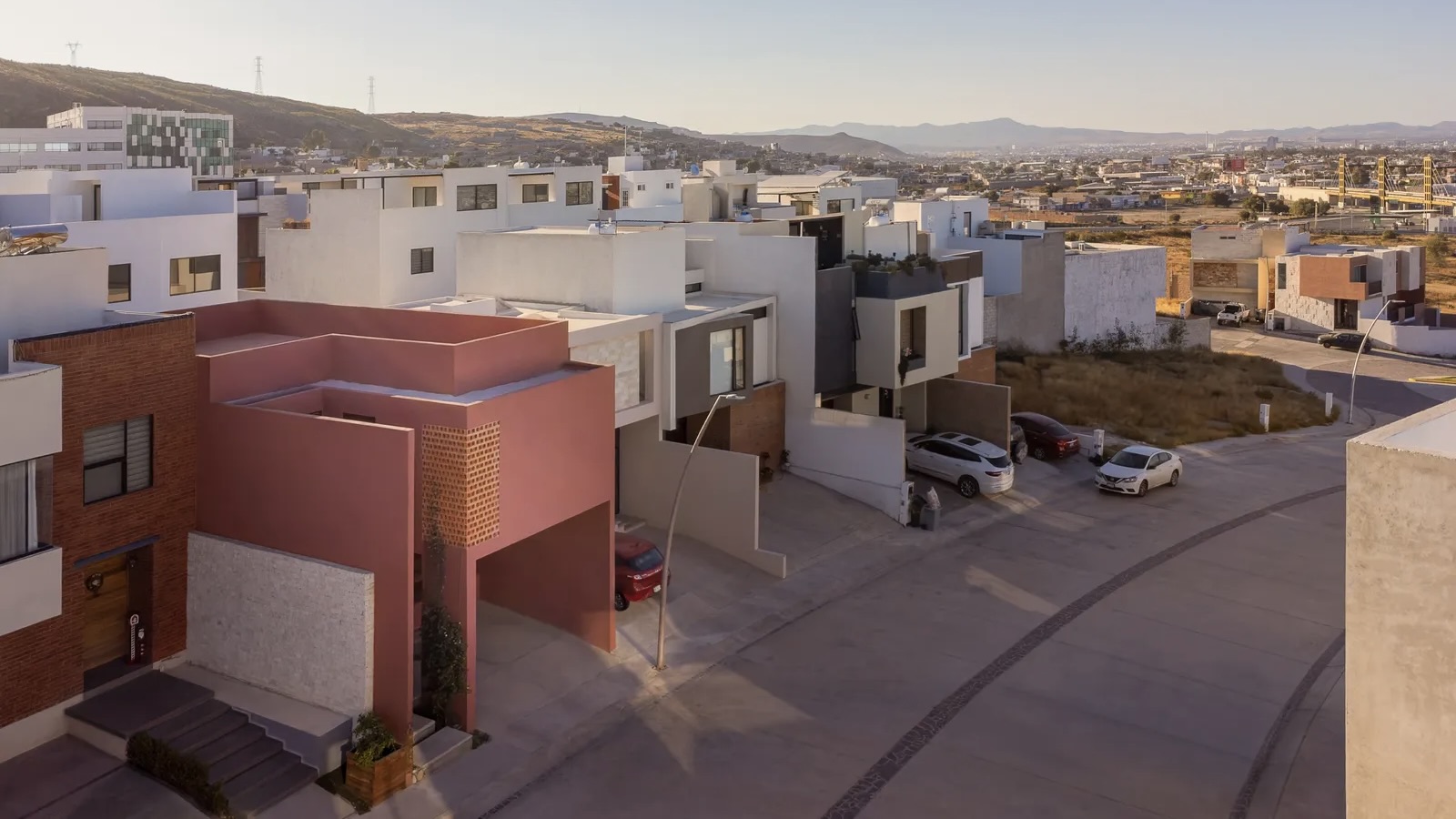 The Architecture Edit: Wallpaper’s houses of the month
The Architecture Edit: Wallpaper’s houses of the monthWallpaper* has spotlighted an array of remarkable architecture in the past month – from a pink desert home to structures that appears to float above the ground. These are the houses and buildings that most captured our attention in August 2025
-
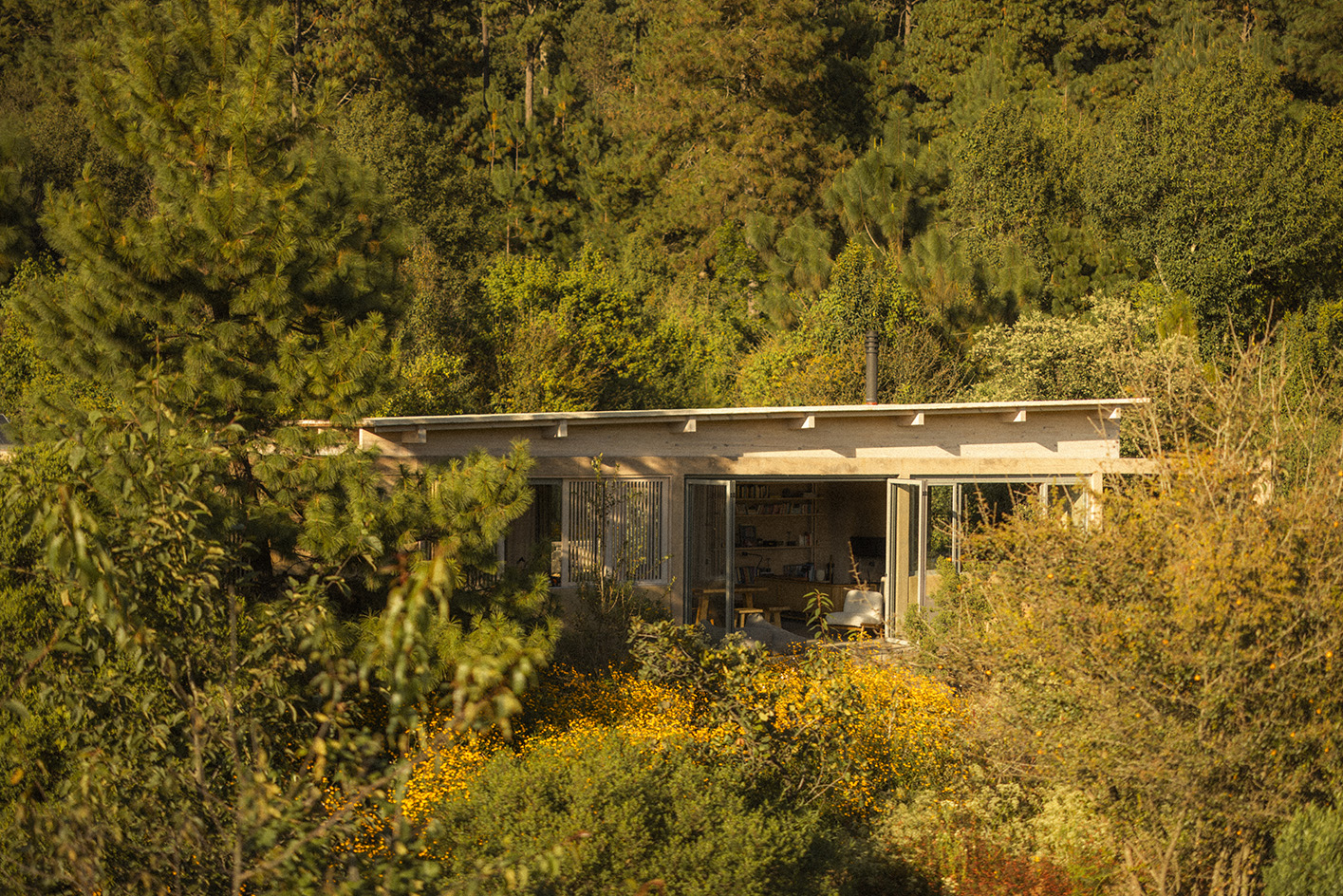 Estudio Ome on how the goal of its landscapes ‘is to provoke, even through a subtle detail, an experience’
Estudio Ome on how the goal of its landscapes ‘is to provoke, even through a subtle detail, an experience’The Mexico City-based practice explores landscape architecture in Mexico, France and beyond, seeking to unite ‘art and ecology’
-
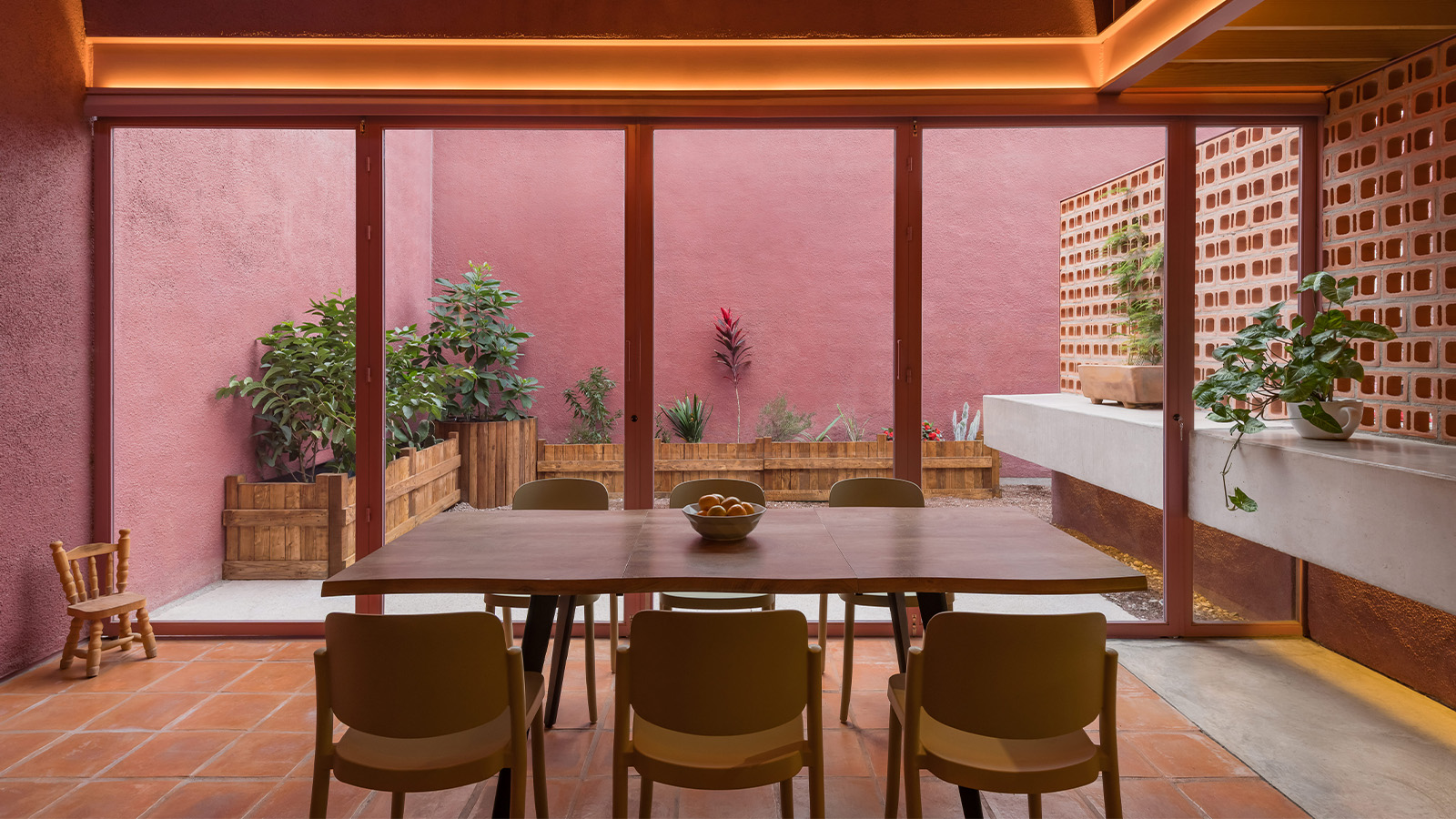 Pretty in cactus-inspired pink, this Mexican desert house responds to its arid context
Pretty in cactus-inspired pink, this Mexican desert house responds to its arid contextCasa Cardona, a pink house by architects Sensacional Dinamica Mexicana, is a multigenerational home that celebrates colour and changing light